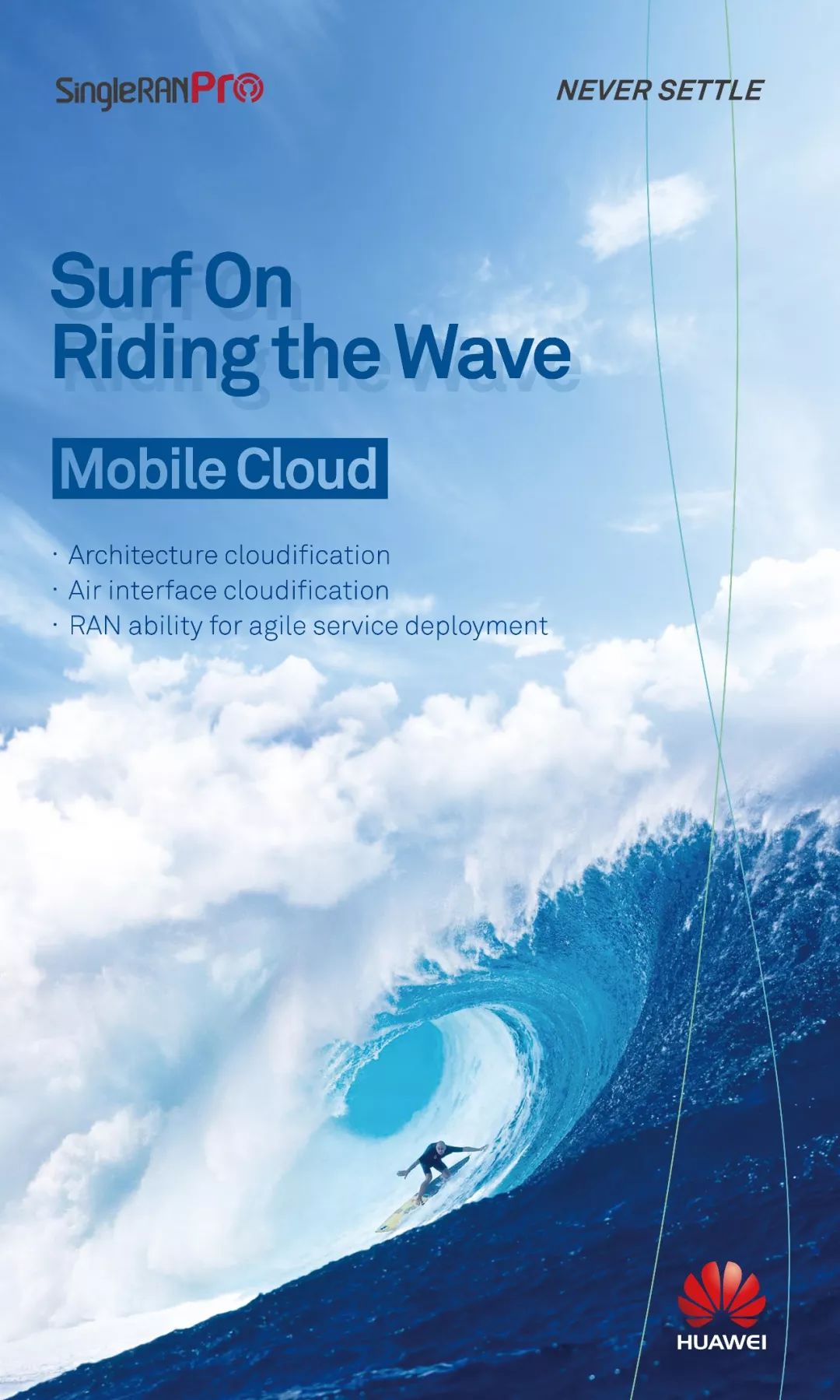Huawei released the SingleRAN Pro solution for the 5G era, which has three highlights, including a network that supports 5G and is compatible with 2G, 3G, and 4G network platforms. One network supports the agile network architecture of operators' multi-service development, and one The intelligent wireless network that realizes automatic management of the network helps operators to cope with the three challenges of the 5G era and build a smart digital world of the Internet of Everything.

In the 5G era, the mobile broadband industry is undergoing profound changes: the release of user MBB traffic demand traction industry is moving towards the MBB business model; the rise of the Internet of Things is about to bring about 10 billion new connections, MBB network enabled The structural changes in the industry such as the Internet of Vehicles and VR/AR are emerging. The new business and new growth that have been nurtured should not be underestimated. However, on the road to 5G evolution, the following three points have become three major challenges that operators can't ignore: how to build 5G networks quickly and cost-effectively? How to allocate 5G network resources agilely and flexibly to achieve maximum network revenue? How to efficiently manage increasingly complex networks to reduce operation and maintenance costs?
The SingleRAN Pro solution released this time combines three highlights to effectively meet the above challenges.
One network supports 5G compatible 2G, 3G, 4G network platform: 5GAll-in-One
A unified hardware platform supports fast and efficient construction of 5G target networks, and is backward compatible with 2G, 3G and 4G to maximize the protection of operators' existing network investments. Compared with SingleRAN's baseband and RF hardware resources, the 5G All-in-One extends the concept of integration to maximize resource efficiency and protect operator investment. Take the sky as an example, from supporting multiple systems to multi-band multi-antenna. For large-capacity scenarios, there is also a series of Massive MIMO for multiple scenarios. In addition, the high integration of hardware platforms such as integrated BBU is not only beneficial for the rapid introduction of 5G, but also greatly simplifies the site space, thereby reducing site energy consumption and reducing site maintenance. cost.

One network supports the agile network architecture of operators' multi-service development: Mobile Cloud
The mobile cloud-based architecture includes three major connotations: network architecture cloud deployment, and a flexible software architecture to support on-demand deployment of different scenarios of operators: DRAN (base station distributed scenario), CRAN (base station centralized scenario), CU-DU Separation (base station separation deployment scenario); spectrum resource cloudization, dynamic allocation of spectrum resources on demand through CloudAIR, rapid introduction of new technologies, and improved spectrum utilization; air interface capacity cloudization, on-demand definition of air interface through network segmentation, according to service definition The internet.
The efficient resource utilization achieved by the network element is deployed on demand and the service is agilely distributed. This will help the carrier network enable vertical industry new services and maximize asset value.

A smart wireless network that automates the management of a network: AutomaTIon
In the 5G era, operators face unprecedented operational and maintenance challenges: multi-system coexistence, multi-service parallelism, more complex network resource management, and differentiated QoS guarantees for vertical business new services.
Through AI-based network optimization, AI-based automated operation and maintenance, and new capabilities based on AI-based networks, it will bring three values ​​to the intelligent wireless network of operators' wireless networks: driving network operation and maintenance is simple. Build the ability of intelligent operation and maintenance; further release the potential of the network, surpass the performance limit; enable more new business and new capabilities, make more impossibility possible, and find automation Solutions for many problems that cannot be solved by manpower.

Zhou Yuefeng, chief marketing officer of Huawei's wireless network product line, said: "In 2007, in the early stage of 4G scale deployment, Huawei released the SingleRAN integrated base station network construction concept and solution, effectively solving the operator's multi-standard network construction problem and greatly reducing the operator's CAPEX investment. For more than ten years, we have continued to innovate, adhering to the concept of integrated network construction and the accumulation of hundreds of networks around the world, and released the SingleRAN Pro solution. We are willing to cooperate with global operators and industry partners to welcome new 5G. The challenges and opportunities of the times."
Fiber Optic Loopback,Fiber Loopback,Fiber Loopback Plug,Fibre Optic Loopback Connector
Huizhou Fibercan Industrial Co.Ltd , https://www.fibercan-network.com
![<?echo $_SERVER['SERVER_NAME'];?>](/template/twentyseventeen/skin/images/header.jpg)